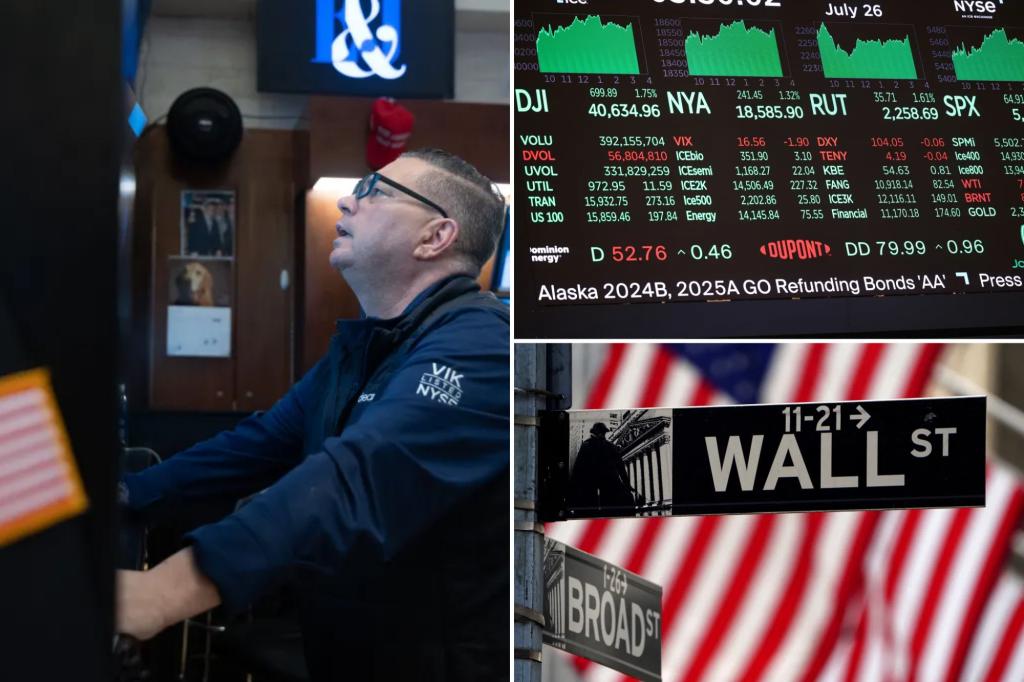Spooked investors are gearing up this week for earnings reports from the market's biggest tech companies, a Federal Reserve policy meeting and a closely watched jobs report that could determine the short-term trajectory of U.S. stocks after a wild turmoil.
A months-long rally for big tech stocks hit a wall in late July, leading to a sell-off on Wednesday that saw the S&P 500 and Nasdaq Composite post their biggest one-day drops since 2022 after disappointing earnings from Tesla and Google-parent Alphabet.
More volatility is on the horizon. Results next week from Microsoft, Apple, Amazon.com Inc. and Facebook parent Meta Platforms Inc. could further test investors' tolerance for potential profit shortfalls at the tech giants. The sharp rise in the shares of the world's biggest tech companies this year has boosted the market but also raised concerns about overvaluation.
The S&P 500 is still about 5% off its all-time high but has risen nearly 14% this year. But some investors worry that Wall Street has become too optimistic about profit growth and that stocks could fall if companies fail to meet expectations in the coming months.
Investors will also be closely watching comments from the Federal Reserve after its monetary policy meeting on Wednesday for clues as to whether the central bank is on track to cut interest rates, which market participants widely expect to begin doing in September. Employment data over the weekend, including the closely watched monthly jobs report, could indicate whether the labor market downturn is deepening.
“It's a critical time for the markets,” said Bryant Van Cronkite, senior portfolio manager at Allspring. “At the same time that people are starting to question why they're paying so much to AI companies, the market is worried that the Fed will miss an opportunity for a soft landing, which is causing a furious reaction.”
In recent weeks, there have been signs of a shift in funds from fast-growing tech giants to market sectors including small and mid-cap stocks, such as financials, and value stocks that have been struggling for much of this year.
The Russell 1000 Value Index is up more than 3% this month, while the Russell 1000 Growth Index is down nearly 3%. The small-cap Russell 2000 is up nearly 9% this month, while the S&P 500 is down more than 1%.
Keith Lerner, chief market strategist at Truist, said even strong performance may not be enough to pull the broader market out of its recent slump, at least in the short term.
“The market is going to take direction based on the fact that these stocks have fallen,” he said. “My view is that because tech stocks have fallen so much, even if these stocks do bounce back on earnings, there will be people who want to sell when they make profits.”
Any signs that the Fed sees the economy worsening more than expected could also spook investors and undermine the view of slowing but still robust growth in inflation that has supported markets in recent months.
“We think they'll stick to the data-driven narrative, but the data isn't moving in a straight line,” said Matt Perron, head of global solutions at Janus Henderson Investors. In mixed signs for the economy, second-quarter GDP growth beat expectations while manufacturing activity is declining.
According to CME's FedWatch tool, the market is now almost certain to price in that the Fed will begin cutting rates at its September meeting, with a total of 66 basis points of cuts expected by the end of the year.
That outlook could be shaken if the weekend's jobs report shows the economy is slowing more quickly than expected or, conversely, if there are signs of a recovery in growth.
Still, the recent sell-off can be seen as a healthy part of burning down the excesses of the bull market, said Charles Lemonides, head of hedge fund Valueworks.
“Long term, I think growth stocks will drive market rallies again in the future,” he said.

